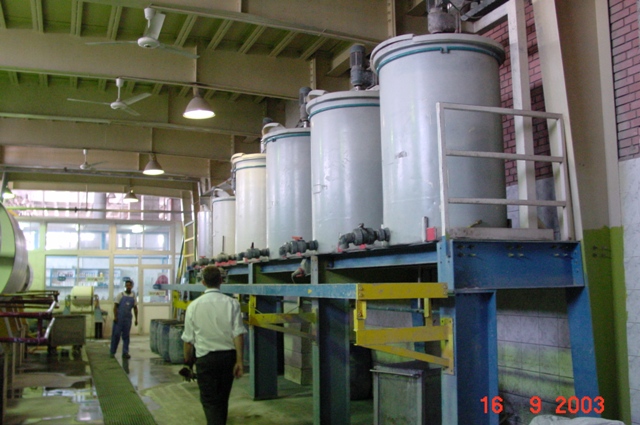Prior to the actual application, porcelain enamel slip need to be prepared in accordance with the application requirements, such as fineness, set and specific gravity.
Traditional wet milling
The traditional wet enamel preparation process (“milling”) consists of the following seven sequential steps :
- weighting of various frits & additions in accordance with the milling formulation
- loading ball mills
- adding water
- wet milling
- discharging ball mills
- sieving & magnetic screening of slip
- storage
Below some pictures of various enamel preparation equipment, such as ball mills, sieves, storage and discharge tanks.


Ready-to-use / Ready-to-mix
Nowadays there are also so-called ready-to-use and ready-to-mix enamels available.
These enamels are already weighted & mixed in the appropriated quantities.
Ready-to-use enamels are supplied complete with water, so those enamels can in theory be used immediately.
Ready-to-mix enamels require just adding water & mixing prior to use.
The benefits of RTU / RTM enamels are :
- Lower capital investment for milling equipment
- Less change for formulation mistakes
Related posts
- Shortage of clay expected
- Wet enamel preparation
- Semi automatic flow coating machines for wet enameling complex objects
- Typical mill additions to enamels and their function
- Wet enamel preparation & milling
